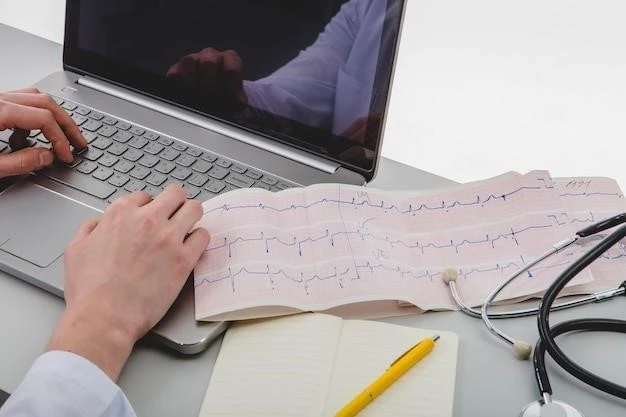Introduction to Situs Inversus Viscerum-Cardiopathy
The terms situs inversus or situs inversus totalis describe a complete reversal of the disposition of your organs. Situs inversus can occur alone (isolated) with no other abnormalities. But it can also occur with other birth defects or as part of a syndrome. Situs inversus is frequently seen in a condition called primary ciliary dyskinesia.
Definition and Overview
The term situs inversus refers to a rare condition where the internal organs are positioned in a mirror image from their usual arrangement. This abnormality can occur alone or in association with other birth defects or medical conditions. In cases of situs inversus, the normal positioning of organs is reversed, creating a unique anatomical presentation that can impact various bodily systems.

Types and Associations
Situs inversus can occur alone (isolated) with no other abnormalities or with other defects, such as liver positioning abnormalities. It may also present with congenital heart diseases like levocardia.
Situs Inversus Totalis
Situs inversus totalis is a rare congenital abnormality marked by a mirror-image transposition of both thoracic and abdominal organs. While known since ancient times, it remains a challenge for many healthcare professionals due to its unique anatomy and association with congenital heart defects.
Situs Inversus with Dextrocardia
Situs inversus with dextrocardia is a unique condition where the heart is positioned in a mirror image along with the abdominal viscera. This rare anomaly, known as situs inversus totalis, presents challenges in both diagnosis and management due to the reversed internal anatomy.
Isolated Levocardia with Situs Inversus, a rare anomaly, presents with a reported incidence of 1⁚22,000 in the general population and is often associated with congenital heart diseases and splenic abnormalities. Patients with this condition may require surgical interventions to correct the heart defects and manage associated risks effectively.
Isolated Levocardia with Situs Inversus
Isolated Levocardia with Situs Inversus is a rare anomaly with reported associations with congenital heart diseases and splenic abnormalities. Surgical interventions may be necessary for effective management.
Connection to Primary Ciliary Dyskinesia
Situs inversus can often be associated with Primary Ciliary Dyskinesia (PCD), a genetic disorder affecting cilia function. While not all individuals with situs inversus have PCD, the condition provides insights into the genetic interplay and potential common pathways underlying both situs inversus and PCD. Genetic studies have highlighted the link between situs inversus and PCD, shedding light on the etiology of these conditions.
Genetic Sequencing Studies
Genetic sequencing studies have revealed valuable insights into the etiology of situs inversus, particularly in understanding its association with conditions like Primary Ciliary Dyskinesia (PCD). By analyzing the genomes of individuals with situs inversus, researchers have uncovered potential genetic links and common pathways contributing to this rare condition.
Clinical Presentation
Left-sided acute appendicitis, if present, can complicate the diagnostic process alongside other anatomical anomalies such as situs inversus totalis or midgut malrotation. These unique cases require thorough evaluation for proper management.
Respiratory Tract Infections
Individuals with situs inversus viscerum-cardiopathy may experience challenges in diagnosing respiratory tract infections due to the reversed anatomical positioning of their internal organs. The altered orientation of organs like the lungs can complicate the presentation and management of respiratory illnesses in these patients.
Diagnostic Challenges⁚ Left-Sided Acute Appendicitis
In cases of situs inversus viscerum-cardiopathy, left-sided acute appendicitis can pose diagnostic challenges due to the unique anatomical positioning of organs. The reversed orientation of internal structures can complicate the identification and management of appendicitis in these individuals.

Diagnosis and Imaging
Radiological and echographic demonstrations help identify abnormal organ orientation, including any presence of dextrocardia, assisting in the diagnosis of situs inversus viscerum-cardiopathy cases.
Radiological and Echographic Demonstrations
Radiological and echographic demonstrations play a crucial role in diagnosing situs inversus viscerum-cardiopathy by illustrating the abnormal orientation of organs, including dextrocardia if present. These imaging techniques aid healthcare professionals in confirming the diagnosis and developing appropriate management strategies tailored to the unique anatomical variations seen in this condition.
Heterotaxy and Situs Inversus Totalis
Heterotaxy and situs inversus totalis are anomalies of laterality where internal organs deviate from their usual asymmetry. These conditions present challenges in diagnosing and managing individuals with altered organ positioning.
Cardiac Considerations
Congenital heart diseases often coexist with situs inversus, with various anomalies like transposition of the great vessels seen in patients with dextrocardia. The reversed internal anatomy poses unique challenges in managing these cardiac conditions.
Congenital Heart Disease in Situs Inversus
Congenital heart diseases often coexist with situs inversus, with various anomalies like transposition of the great vessels seen in patients with dextrocardia. The altered heart position poses unique challenges for diagnosis and management.
Association with Supraventricular Tachycardia
Individuals with situs inversus viscerum-cardiopathy may be predisposed to conditions like supraventricular tachycardia, complicating the diagnostic process and requiring tailored treatment strategies to address these cardiac concerns effectively.
Management and Treatment
Surgical interventions play a pivotal role in managing heart defects associated with situs inversus viscerum-cardiopathy, requiring specialized approaches to address the unique anatomical challenges. Long-term care focuses on prognostic monitoring and addressing potential complications to ensure optimal outcomes for affected individuals.
Surgical Interventions for Heart Defects
Surgical interventions are crucial for managing congenital heart diseases associated with situs inversus viscerum-cardiopathy, often necessitating specialized approaches due to the unique anatomical complexities presented by reversed organ positioning. These interventions aim to address and correct the specific cardiac defects to optimize patient outcomes and long-term health.
Prognosis and Long-Term Care
The long-term prognosis for individuals with situs inversus viscerum-cardiopathy varies depending on the severity of associated congenital heart diseases and other complications. Regular monitoring and specialized care are essential to manage potential health risks and ensure optimal outcomes for affected individuals.
